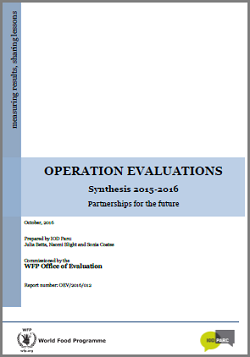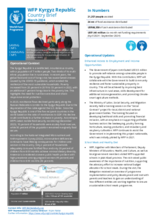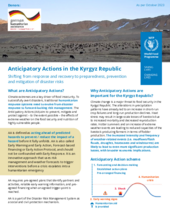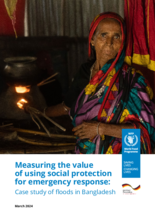
The evaluations found that operations were well aligned to national policy frameworks and objectives, with most operations moreover reflecting a pro-active strategic approach to design, implementation, or direct support to development of national policy frameworks. WFP’s strategic positioning reflects the organisation’s shift from implementer to enabler, now gathering pace.
Data availability continues to improve, with monitoring systems praised in six evaluations. Beneficiary numbers and quantities of food, cash and vouchers distributed are the main output-level results reported. Targeted beneficiaries were served with less food (52% of target), and less cash (47%) than planned. All operations faced either reduced duration, frequency, or entitlements of assistance, sometimes for several months. At outcome level, data was more readily available yet also constrained by the mid-term nature of the evaluations. Data quality remains a challenge. WFP’s traditional areas of strength, SO 1 and SO 2 show consistent available evidence and strong achievements. SO 3 and SO 4 see weaker evidence availability and/or more variable performance. The positive pattern of strong partnerships with governments during implementation keeps on, as the inconsistent pattern of WFP’s relationships with partner UN agencies, with missed opportunities. WFP continues to increasingly take, where conditions permit, enabling roles, as food security advocate, knowledge broker, information supplier, as well as innovator and pilot tester, namely in disaster risk reduction.
Factors explaining results are both external (context and operational terrain, political and policy challenges, insufficient funding in terms of volumes or type/duration), and internal (limited human resources in terms of technicity, or numbers; weak internal communications; and design flaws linked to limited use of – and learning from - available evidence; limited gender sensitivity and shallow analysis, and; targeting weaknesses). Enabling factors include conducive policy environments, strong technical back-stopping by regional bureaux of small country offices and WFP credibility with government partners. Overall, the synthesis finds WFP’s adoption of an enabling (rather than purely delivery) model successfully helping build nationally owned food and nutrition systems, where conditions permit.



